Chamonix replica Porsche 550 Spyder featuring 356 parts
Extensively upgraded with genuine Porsche parts, new reproductions of original 550 components and a 130bhp two-litre flat-four, this wonderfully presented Beck Chamonix Spyder offers all the fun of the real deal at a fraction of the cost...
Words Dan Furr
Photography Rich Pearce
DOUBLE TAKE
A Chamonix replica Porsche 550 Spyder featuring 356 parts.
Replica. It’s a pigeonhole most automotive enthusiasts use when describing a facsimile of a historically significant car, regardless of whether the model paying tribute is based on a similar vehicle from the same manufacturer’s product line-up. With this in mind, it seems unfair to bundle, say, a Carrera 3.2 expertly (and sympathetically) backdated to look precisely like a Carrera RS 2.7 with a Toyota MR2 wearing an ill-fitting, proportionally incorrect Ferrari F355-style body kit. Don’t get us started on the Honda Civic EG coupe we spotted pretending to be a Bugatti Veyron in the pages of Fast Car magazine a few years back.
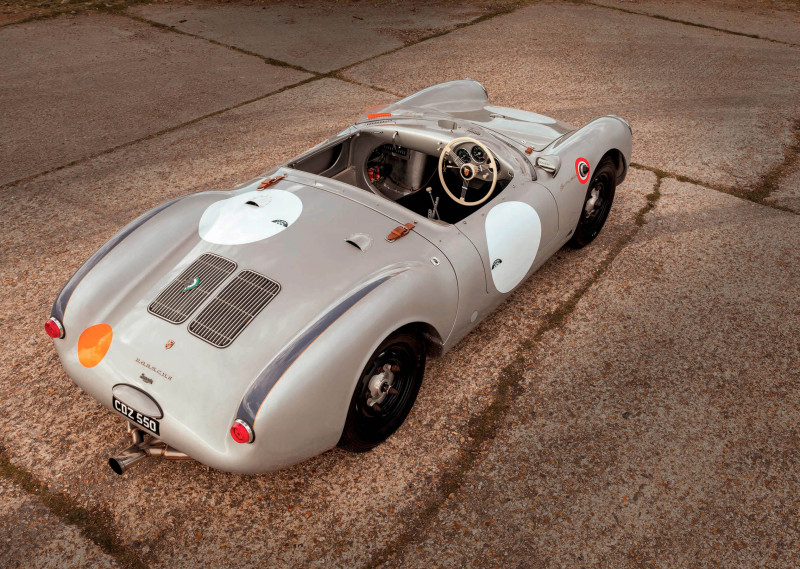
EVENT MANAGEMENT AT THE LE MANS CLASSIC TRIED TO USHER DAVID AND HIS CAR INTO THE DISPLAY PADDOCK
There are, of course, myriad reasons someone might invest their hard-earned cash in a replica, regardless of whether it fails to fool even the most fair-weather of motoring enthusiasts. The object of desire being subject to low-volume production and therefore rendered unobtanium is a common catalyst for buyers parting with their hard-earned cash in exchange for what they see as the next best thing. Unsurprisingly, the cost of acquiring the real deal is also a major factor, especially if we’re talking old Porsches — there’s a reason 917, 356 Speedster, 904 Carrera GTS and 550 Spyder replicas are so popular, particularly in the United States: the genuine article is not only hard to come by, but will command a price only a tiny percentage of the enthusiast community can afford.
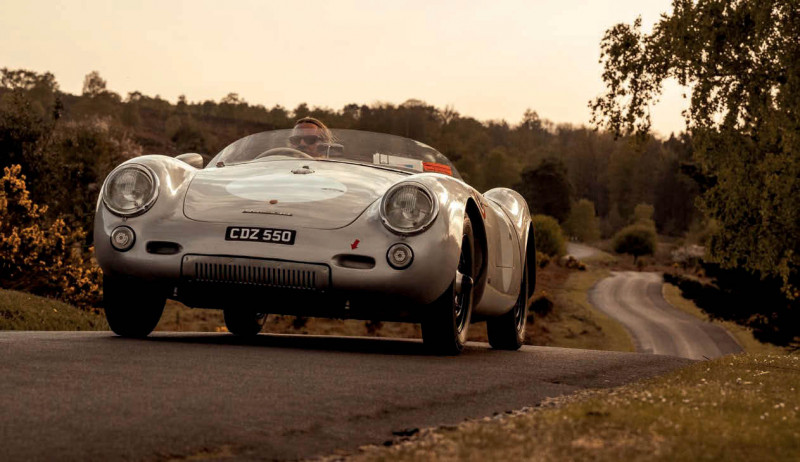
Therein lies another problem: what was once regarded as an obsolete vehicle valued at a modest sum might now be a collector classic worth millions. Boasting possession of such an appreciating asset is a nice problem to have, but somewhat understandably, many owners would rather take to the streets (or track) in a replica than risk putting their pride and joy at the mercy of the hordes of idiot drivers out there. In this instance, a replica makes perfect sense, even when an individual has the means to buy the definite article — no enthusiast wants to feel uncomfortable or browbeaten behind the wheel of their car, let alone terrified about the potential for accident damage to knock a few zeros off its value.
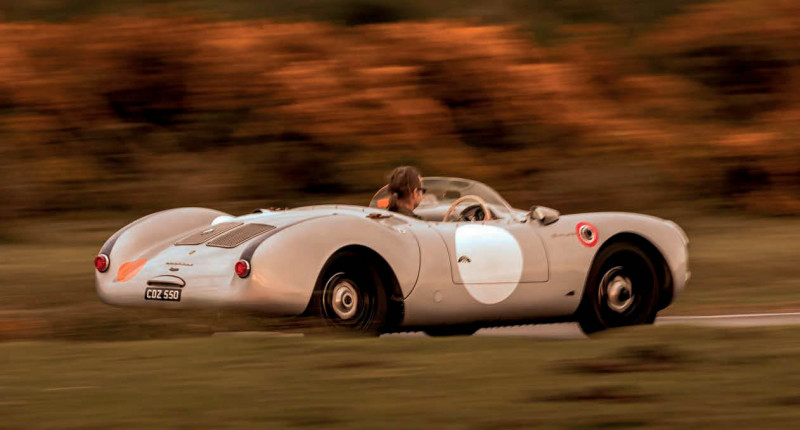
In the case of the 550 Spyder, this could be a price north of $4m, as demonstrated by the 1955 ex-Theo Helfrich example (chassis 550-036), which shifted for a whopping $4.2m at the Bonhams Amelia Island auction on 3rd March this year. Earlier, in 2018, Bonhams topped the charts by selling a later chassis for $5.17m, the most ever paid for a 550 Spyder at auction.
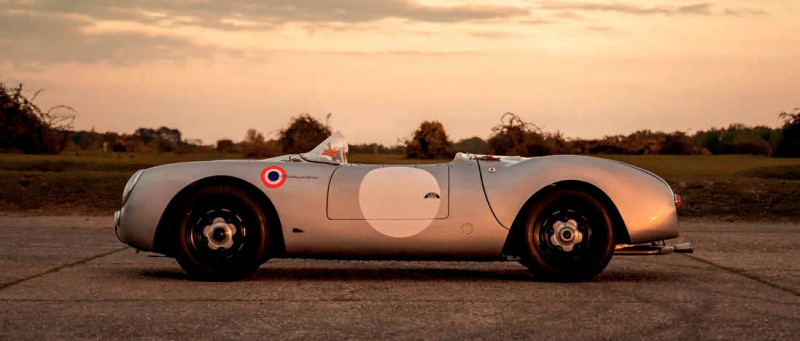
Accepting the fact cost of ownership puts an authentic 550 out of reach for all but a small number of enthusiasts, and acknowledging the fact a replica affords owners opportunity to put the pedal to the metal with unrestrained impulsiveness, the challenge becomes getting hold of a car promoting a convincing likeness — beyond reasonable doubt — to the original vehicle it pays tribute to. On this front, Porsche fans are in luck.
WORKING UP AN APPETITE
Beck is a name many of you will be familiar with, such is the popularity of the brand’s 356 Speedster, 550 Spyder and 904 replicas. You may also be aware of the names Chamonix and Special Edition, all related to Porsche-aping products. In short, Chuck Beck (a former employee of Carrol Shelby and described by none other than Jay Leno as a “mad genius”) began building 550 Spyder replicas in the USA back in 1982, incorporating contemporary Volkswagen technology to improve handling and performance. These cars were celebrated for their engineering, but also for being respectful of the original Porsche design, a feat accomplished by Beck’s decision to create body moulds from original 550 panels. In 1988, he focused his attention on developing a 904 replica, but not before establishing Chamonix, a production facility in Brazil, which he founded with former race car constructor, Milton Masteguin, and other business partners. Here, Beck Spyder kits and many complete cars were hand-produced, primarily for the US market, but also for customers around the world.
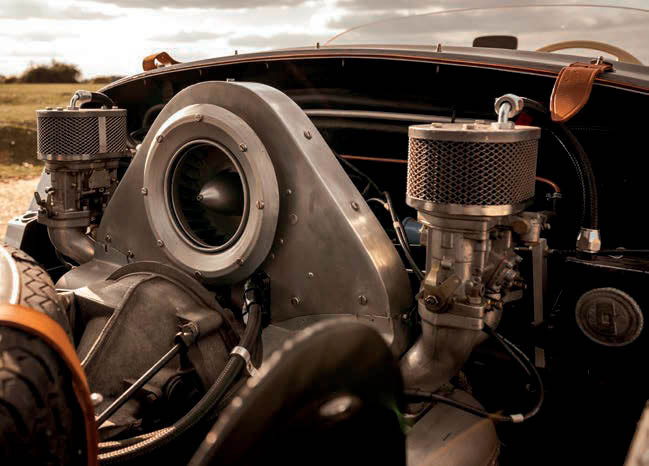
Eventually, Beck sold his share in the business and production was returned to the United States, marking the third phase of Beck Spyder production. Today, Beck GTS (904), Spyder (550) and Speedster (356) kits and cars are manufactured and sold by Special Edition Inc., aptly located in the German Township of Bremen, Indiana. Beyond their attractive price point, there’s a reason these cars remain so popular: Chuck Beck’s mission was to produce cars enthusiasts can enjoy driving, rather than having to care for overindulgently out of fear for reducing value simply through regular use. It’s also worth noting how, during each phase of production, Beck Spyders have incorporated purposebuilt, hand-assembled chassis constructed in spotless, professional assembly facilities by experienced industry professionals using the highest quality materials, unlike pop-up manufacturers of similar products. It’s an ethos which continues to this day, and it shows.
The car you see on these pages is a Chamonix Spyder, its build stretching back to Beck production in Brazil. It’s a rare beast, not only because it eschews many modern replica parts for genuine Porsche components, but also because it’s right-hand drive, something which has presented a challenge for its owner, David Rennie, on more than one occasion. We’ll come to this shortly. Beforehand, it’s worth summarising events leading up to David’s acquisition of this gorgeously presented silver machine in 2018.
In the early 2000s, he bought a right-hand drive 1960 356 B coupe, a car imported to the UK from South Africa. He rebuilt the tin-top’s gearbox and Super 90 flat-four at home, treating the punchy boxer to a big bore kit and racy cams. During his ownership, he spent many years “scouring the Earth” for new old-stock items, ensuring every aspect of the air-cooled classic was maintained using genuine period Porsche parts. Ultimately, however, he reasoned the way to ensure the car’s survival long into the future was to treat it to a full body restoration, which he duly commissioned.
Unfortunately, the company tasked with taking on the work overpromised and underdelivered, a fact brought into light by an agonising court case centred around the largely irreversible damage caused to the car during what was supposed to be an enjoyable and rewarding restoration. Recognised marque specialists testified on David’s behalf (one described the supposedly restored 356 body as “dangerous”), but irrespective of the mountain of evidence supporting his complaint, there was no getting away from the fact his treasured 356 was ruined.
Its many original parts were subsequently sold as spares to a buyer in Ireland, leading David without a Porsche, but with a huge amount of emotional turmoil. Indeed, he admits to feeling guilty about handing the car to a business unable to take care of the work he commissioned them to do, not that he was aware of the fact at the time. Unsurprisingly, following conclusion of legal proceedings, his thoughts turned to replacing the 356 — with a keen eye on his bank balance, the notion of buying a 550 Spyder replica made a lot of sense. And he just happened to know where there was one sat motionless in a field.
“The engine had seized,” he tells us. “The car was owned by a trainee solicitor who had unsuccessfully attempted to fix the fault. Throwing in the towel, he let me take ownership.” The problem concerned the 550 Spyder’s single tailpipe, replicated on the Chamonix build. “Where the car had been used and washed outside, water had entered the tailpipe, which is angled upward. The bores had filled with water and the engine subsequently seized.”
The flat-four in question is a 130bhp CB Performance unit with displacement of 1,915cc, a significant jump up from the original 550 Spyder’s 1,498cc, echoing Beck’s intention to afford his replicas more power and handling prowess than Porsche was able to give its products in period. David rebuilt the CB Performance boxer, which benefits from new heads, pistons and cylinders, 550- style valve covers, a fresh valvetrain, Vintage Speed-supplied 356-style oil filler, an oil breather system (as per the factory 550 Spyder), a high-flow oil pump, aluminiumspun pushrod tubes, an aluminium power pulley, all new ignition equipment and twin Weber carburettors fed by a brace of Facet fuel pumps (wearing the same decals as those of 550 Spyder chassis 054) feeding the carbs through a vintage Bosch fuel separator and managed by a Malpasi fuel pressure regulator. The result is vivid performance announced by way of a satisfying bark through a Turbo Thomas custom stainless exhaust system. To assist with keeping toasty operating temperatures at bay, a 550 Spyder-style centre-mount engine shroud from CB Performance was modified and fitted, as were standalone oil coolers at the front and rear of the car.
As you can see, David has a taken great care to adopt (and adapt) original Porsche features where possible. It’s an approach extending to a wealth of genuine 356 parts, not limited to the speedometer, combination gauges, fuel tank sender plate, rear engine grille seals, exhaust brackets, the oil temperature and pressure distributor block, both battery terminals, shock absorber mounting brackets, the fuse box and torsion bar covers. Early 356 rear brake lights have been fitted to the wings as pitlane sidelights.
MAKE A PACKET
The body was built in the UK from a base Beck Spyder kit manufactured and supplied by Chamonix in 2009. “There’s no limit to how far you can go with a 550 Spyder replica,” David explains. “As a rule, the more you spend, the closer you’ll get to the original Porsche, to the extent you might even option a Type 547 ‘Fuhrmann’ fourcam.”
Needless to say, with his keen eye for detail and a passion for Porsche, he recognised many aspects of the car which he considered strayed too far from the real 550 Spyder. Indeed, consulting reference books, he’d identify where 356 parts had been used by Porsche and then order the same components from marque specialists, including Roger Bray Restoration, Soeger Classic Parts, Karmann Konnection, Replica Parts and Machine 7. The biggest haul of parts came from Fibersteel, which for more than twenty years has been manufacturing components for original and reproduction 356s and 550 Spyders from the company’s base in Azusa, a city in the San Gabriel Valley in Los Angeles, California.
The team, led by company boss, Russ Rodriguez, is known all over the world for its high standard of workmanship, which is why David had no qualms about splashing out on a significant number of Fibersteel products for his Chamonix Spyder.
The full scope of his Fibersteel bounty is too vast for these column inches to accommodate, suffice to say highlights include a shifter, handbrake, wing mirror, rearview mirror, dashboard handle, body badges, leather straps (for the clam shell, bonnet, spare wheel, jack mount, exhaust and nose), a polycarbonate windscreen, jack points, horn push, VIN plates, start button, pull switches, indicator stalk, brake pedal cluster, roof mounts, aluminium chassis hoop and frame rail trims, number plate light, clam shell locks, Banjo-style steering wheel, aluminium dash pod mounting plate and genuine Bosch indicator lenses, all in the style of the original 550 Spyder. There’s even a tool kit mirroring the set supplied by Porsche.
The shift assembly and pedal box required extra attention from David due to his car being righthand drive and the vast majority of Beck Spyders — and therefore their parts — being configured for left-hand drive. Indeed, he tells us the work he has done to adapt parts to suit his car has caught the attention of 356 and 550 replica producers and parts manufacturers in the USA, many of them keen to introduce his workarounds to their product lines. He also had to make adjustments to the fibreglass seat shells he purchased from Speedster Clinic. “356 Speedster seats are different to those of the 550 Spyder,” he reveals. “I trimmed the edges to match the shape of pews fitted by Porsche.” The devil is in the detail, as they say.
Other work he has carried out, including custom fabrication, can be seen in the form of a factorystyle fuel tank cover and fuel filler, a Porsche-style engine belly pan, a ‘cheese grater’ inner rear shell, the chassis structure in the front foot wells, the rear arch closing panels, interior cladding, rear wheel closing panels (and brushes), the fuse box mount and door caps, all made from lightweight aluminium. He’s also located the battery and brake fluid reservoirs in keeping with the original 550 Spyder, introduced a Bosch period-style foot-operated headlight dip switch, period headlight glass, period-correct horns, Special Edition windscreen wiper delete plugs, bump stops, a rear brace, an early factory-style clamshell folding stand, plus door seals mirroring those of 550 chassis 036. The gearbox is an off-the-shelf remanufactured Volkswagen unit, now paired with 550 Spyder-specification short axles and spacers. Stopping power is provided by drums at the rear and powerful CSP disc brakes at the front, both setups covered by factory-style aluminium skins.
The same nod to originality can be found on the Koni dampers, decorated with period-correct stickers and helping this low-slung Spyder to exploit the rigidity of its expertly crafted tubular chassis through nimble handling, despite those skinny wheels and tyres.
As mentioned earlier, Chuck Beck achieved the faithful look of his Spyders by taking moulds from the bodywork of a genuine 550. What’s on display here is utterly mesmerising, characterised by supremely good fit and finish, plus the benefit of only 4,600 miles on the scoreboard.
EVOCATIVE EMBLEM
The rear quarters are beautifully detailed with tapered blue stripes featuring gold edging, the look enhanced by white racing roundels and a Sonauto tail badge, as well as a grille badge issued at the Nürburgring during the genuine 550 Spyder’s time in production at the Porsche factory in Stuttgart. In fact, so convincing is this exquisite replica, event management at the most recent Le Mans Classic tried to usher David and his car into the display paddock when he was attempting to find his way to the event campsite!
That’s right, David isn’t afraid to use his Spyder whenever the mood takes him, providing the weather holds out — he has a factory-style tonneau to take advantage of, but the lack of windscreen wipers isn’t exactly ideal for heading out in the wet. Even so, we wonder how the driving experience compares to that of his dearly missed 356. “My Porsche was tuned by PR Services to be race oriented, with ride height and chassis tuning in keeping with a track car. Though the 550 Spyder was a race car by nature, the evolution of Porsche products had moved on drastically by the time of the 356 B — I liken the changes to the difference between a steam engine and an electric locomotive!” he laughs.
“The 550 rides on very slim tyres and the mid-engine layout gives it very different handling characteristics. The rubber lights up and the back end gets twitchy where the 356 would really dig in, but this is still very much a fun car to drive, with things getting progressively more exhilarating the further you ask the rebuilt CB Performance flat-four to pass the 100mph mark.” Hold on to your hats, people.
Notwithstanding the technological marvel that was the Fuhrmann four-cam, there’s no denying the 550 Spyder and the replicas it has spawned are basic cars. This is no criticism — expertly engineered, their charm lies in simplicity of design. In terms of both the ownership and driving experience, the Beck Speedster (regardless of when it was built and by which manufacturing facility) is very much a ‘hands on’ car, ideal for the enthusiastic home mechanic and a far cheaper proposition than the cost of owning and maintaining a 356 (or a real 550 Spyder, natch). You can press on in David’s car, safe in the knowledge price of repair won’t require you to sell a kidney, should something go wrong. And let’s face it, most people buy a Spyder replica because they want to promote the illusion of driving a real 550. When the copycat car is as good as this, and when the end result is carrying so many original Porsche parts, we can totally appreciate the appeal.
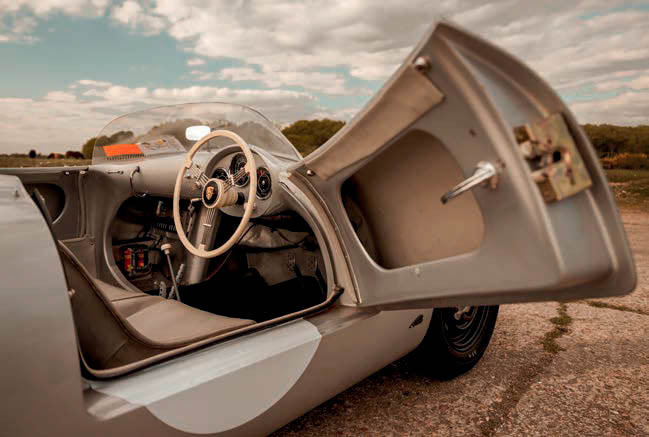
Above and below The replica classic Porsche scene is huge, especially in the United States, where an entire industry of aftermarket parts suppliers exists, though right-hand drive 550 Spyder replicas are seldom seen.
Above The resurrection of this Chamonix 550 served as a form of therapy for David after the trauma of losing his beloved 356 coupe to a restoration gone wrong.
Above The lack of windscreen wipers, the open cockpit and the low-cut front glass amounts to fun in the sun, but not a great driving experience if caught out in the rain.
Below Two-litre flat-four is a 130bhp CB Performance unit rebuilt by David and benefiting from a raft of performance enhancing updates.
Above and below With the cost of a real 550 Spyder likely to set you back millions, a convincing replica makes a lot of sense, even if you can afford to get hold of the original Porsche product.
Above David’s 550 replica was manufactured at the Chamonix plant in São Paulo, but now makes use of many parts from Fibersteel, a company developing and producing aftermarket parts for original and reproduction 550 Spyders, 356 Coupes and 356 Speedsters.


